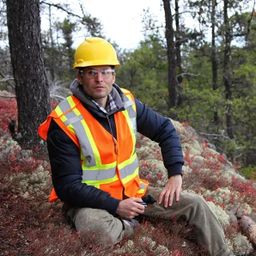How does the surrounding environment determine tree growth in boreal forests of western Québec?
My Session Status
Growing concerns about vulnerabilities of boreal forests to climate change and disturbances warrants additional information about their impacts on the growth of dominant tree species in different surrounding environments. To address these concerns, we investigated how the surrounding environment influences the growth of such trees and their responses to climate and insect epidemics in stands of eastern Canada’s boreal forest. For this, we focused on 96 black spruce, jack pine, and trembling aspen focal trees in stands spanning a double gradient of species diversity and soil granulometry within a 36 km^2 study area of the Nord-du-Québec region. For each focal tree, we developed a basal area increment chronology to compare growth rates, tested climate-growth relations with growing season length and summer heat stress, and evaluated tree growth during epidemics of spruce budworm and forest tent caterpillar. We established a cell around each focal tree to describe the surrounding environment, namely stand structure and diversity, soil, and topography. We then defined stepwise multiple linear regression models to assess how responses of the focal trees were influenced by the surrounding environment. We found that variables characterizing stand structure and diversity were most often included in models and had the strongest influence on tree growth and responses to climate and epidemics. Our research offers novel insights on the potential role of the surrounding environment in mitigating the vulnerability of eastern Canada’s boreal trees to climate change and insect epidemics.
